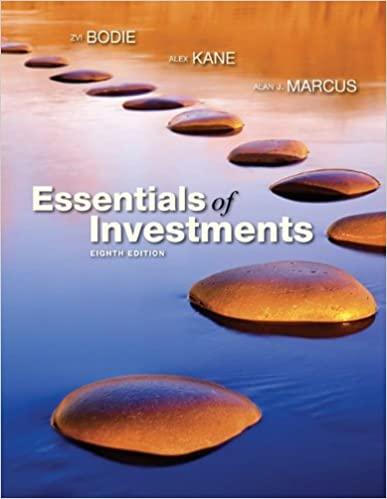A large corporation issued both fixed and floating-rate notes five years ago, with terms given in the
Question:
A large corporation issued both fixed and floating-rate notes five years ago, with terms given in the following table:
9% Coupon Notes Floating-Rate Note Issue size $250 million $280 million Maturity 20 years 15 years Current price (% of par) 93 98 Current coupon 9% 8%
Coupon adjusts Fixed coupon Every year Coupon reset rule — 1-year T-bill rate 2%
Callable 10 years after issue 10 years after issue Call price 106 102 Sinking fund None None Yield to maturity 9.9% —
Price range since issued $85–$112 $97–$102
a. Why is the price range greater for the 9% coupon bond than the fl oating-rate note?
b. What factors could explain why the fl oating-rate note is not always sold at par value?
c. Why is the call price for the fl oating-rate note not of great importance to investors?
d. Is the probability of call for the fi xed-rate note high or low?
e. If the fi rm were to issue a fi xed-rate note with a 15-year maturity, callable after 5 years at 106, what coupon rate would it need to offer to issue the bond at par value?
f. Why is an entry for yield to maturity for the fl oating-rate note not appropriate? LO.1
Step by Step Answer:

Essentials Of Investments
ISBN: 9780697789945
8th Edition
Authors: Zvi Bodie, Alex Kane, Alan J. Marcus





